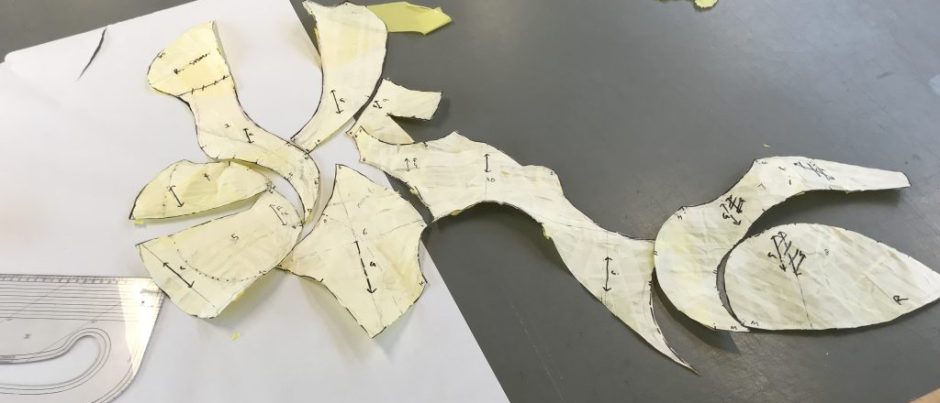In a group tutorial led by Catherine, Navin, Oliver, and myself talked through our ideas for our ARP’s.
I was particularly taken with Navin’s ideas, around de-colonising, or cross-pollinating technical practise, initially through the deconstruction of notions of ‘classic’ garments (e.g. the ‘shirt’) which are of the western European tradition.
In explaining my interests, Catherine suggested speaking to Saffie, who has similar research interests. However, in describing the issue these research ideas come from, Catherine suggested taking a few steps back, and looking initially at why students might not come into the space sooner – i.e. investigate what the access barriers are, in order to then address them, rather than making assumptions that this is down to procrastination. This was towards the end of the tutorial so we did not get into the discussion around how I would do this.
I then spoke to my colleague Verity Cleary, who has worked in the same role as myself for around 15 years, and consequently is very experienced in supporting these students. She mentioned that she has had interactions in which students have expressed feeling intimidated by the space, and as though they do not ‘belong’. This reminded me that I had had a similar conversations with another academic member of staff several months ago, who suggested the same thing. This reminded me of an in-passing interaction I had with a neurodiverse student last year, who told me they find the space too overwhelming and overstimulating to use.
This tutorial and interaction has made me consider re-drafting my research question to something which is more ‘open’, and shifting my methods to something which allows me to collect data on studnet interaction with the space, as a starting point.
